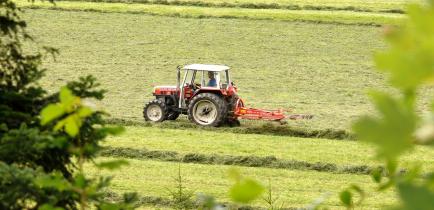Climate change (CC) is one of the most important global environmental problems. Climate change has significant impacts on the most vulnerable communities. Given its characteristics, agriculture can be considered one of the most affected sectors and the most vulnerable to climate change. The sensitivity and susceptibility of agriculture to the variations in climate parameters are the cause of this fact. The fact that agriculture accounts for a significant share of national GDP translates into the national economy’s sensitivity and growth to climate change. In India, 60% of the GDP is agriculture. About 60% of the population is dependent on agriculture, highlighting the need for resilient systems and strategies for the agricultural sector and the farming community. Where semi-arid areas are considered particularly vulnerable to climate change. The Swiss Agency for Development and Cooperation supported Development Alternatives, a civil society organization active in the Bundelkhand region of Central India, to build actions and influence policy to address the region’s climate vulnerability and its impact on livelihoods.

Challenges:
Semi-arid regions are particularly less resilient to adverse climatic conditions, leading to more negative impacts. Bundelkhand has experienced severe drought in the recent past (five drought years in the last seven years). Last year there was no hydrological drought, but a delayed monsoon led to a failed Kharif season in most Bundelkhand regions. The increasingly common drought in the area is causing farmers to take extreme measures out of frustration. There have been farmers leaving their animals in the fields because the crops did not yield anything in delayed monsoon cases.
Although farmers are faced with these challenges, they are not yet aware that these droughts are not incidents but reflect decreasing rainfall and irregularity. These incidents will become more frequent in the future. Thus, there is an urgent need to identify strategies to combat climate change and raise awareness of the vulnerable parts and make them ready to adopt climate change adaptation strategies.
Mitigation and Adaptation:
Some several factors and sectors are responsible for greenhouse gas emissions and thus climate change. The agricultural sector has been the most unmanaged to date due to i) non-point source emissions of greenhouse gases, ii) the need and priority of higher productions to feed the ever-growing population. As mentioned above, the agricultural sector is also the most susceptible to climate change, contributing to the vicious cycle. Inefficient agricultural practices cause more greenhouse gas emissions, which accelerates climate change and leads to lower production. To compensate, farmers tend to use more resources where and when they are available in fertilizer, water etc. which are the main factor for inefficiencies in the agricultural sector.
Climate change impacts and solutions:
In the Bundelkhand region, according to climate calculations, rainfall is expected to decrease by 20% after 25 years, and the productivity of existing crops may fall by 15%. The decrease in land ownership per farmer will add to the negative impact of these projections.

Thus, the projected facts after 20-25 years would be:
– Reduced precipitation, thus
o Less availability of surface water
o Deeper groundwater table
o Low yields from rain-fed agriculture
– Smaller land holdings
– High input costs in agriculture
– Lower profitability per unit of land
– Higher risk of crop failure
The above estimates of reduced production are based on existing crops and practices. Our adaptation strategies should focus on methods that can nullify or reduce the effects of unpredictable climatic conditions. Such as:
– Use of crops/crops that require little water and are resistant to drought.
– Reducing water losses in agriculture and irrigating the crops/crops rather than the land
– Using improved practices to conserve water users such as mulching etc.
– Reduction in input costs through the proper application of inputs
– Adopt and promote alternative models for dual/multiple uses of land, such as different forms of agroforestry or multi-crop farming
– By having fall-back options such as alternative income sources/crop insurance etc.
Where there is a will, there is a way.
The approach adopted to take and fight climate change is two-sided, i) Identifying the technical options and interventions needed, ii) making the community aware and helping them take the lead to fight climate change.

